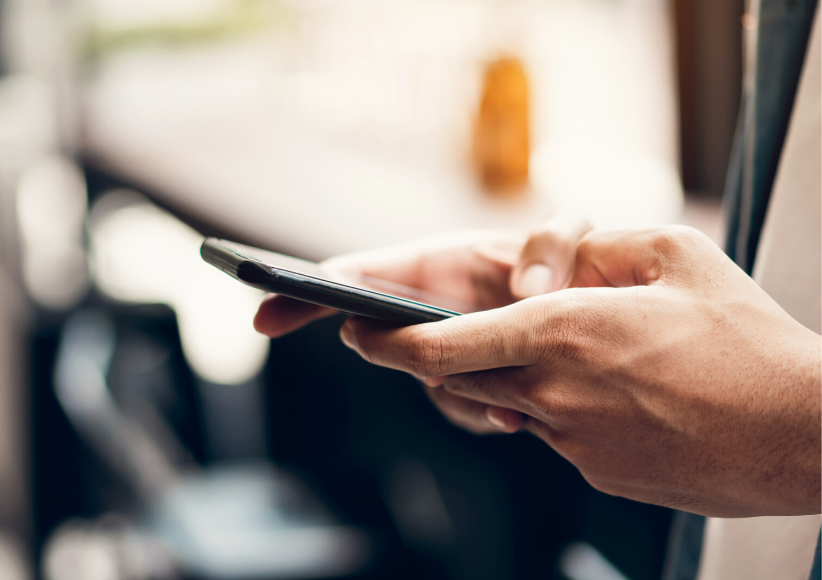Technology
Aug 25, 2020
Driving Mobile Engagement Through Notifications: Mobile Strategy Series Part 4

Notifications can be used to drive mobile engagement by highlighting new features, promoting ongoing marketing campaigns, and alerting users to general news about your product and services. Types of mobile notifications include SMS, push via native apps, email, and local native notifications and alerts.
For external marketing campaigns, studies show that mobile user click-through rates (CTRs) vary for different messaging types. CTRs for SMS are greater than push notifications, and push notifications are greater than email, although the exact numbers vary between studies and domains. Each of these notifications can be used by marketing and digital teams to improve user engagement. In this blog post, we’ll dive into the appropriate content for mobile notifications, types of notifications, and the various tools marketing needs for a thorough mobile strategy.
WHAT MAKES A GOOD NOTIFICATION?
Mobile notifications should be:
Clear, concise, and easy to digest
Temporally relevant
Actionable
As more apps and services vie for a user’s attention and our collective attention span is decreasing, a notification that’s clear and concise is important. The notification messaging should be relevant to your brand and distinguish you from other, similar notifications from competitors. It’s equally important to send notifications with actionable outcomes to drive user engagement.
Here are some example notifications and our overall impressions:

IN-APP MESSAGING TOOLS
Push notifications will probably be the number one requested feature by your marketing team and for good reason: it is an excellent way to engage with audiences and introduces a new channel that can be used for all kinds of marketing purposes. Good usage of in-app notification strategies like push can also improve app adoption and retention.
Push notifications should be used to drive the opening and exploring of features in the app, show relevant content to the user, and facilitate surprise and delight experiences. Avoid using them to inform users of general news or to show information that can be delivered through other channels or using some of the other notification strategies outlined in this article.
Creating a way to display general messages in a prominent way inside your app (aka, local notifications) is an important and handy, but often forgotten, feature. These can be used to alert users of important updates about your brand such as policy changes, shipment delays due to weather, changes to store hours, or extended customer support schedules. These messages should be prominent enough that they are not easily missed, but not so much that it annoys users. They should include simplified message text and a call to action (CTA) for users to find more information. The content for these messages should be triggered and managed remotely without requiring an app update, ideally with an integration into any existing content management systems (CMS).
Another avenue for integration with marketing strategies is to use the existing features of an application to prompt the user with CTAs. For example, users can be notified when their pick-up order is ready or to sign up for a loyalty program or newsletter after a purchase, automatically prompted when near the store with directions or next steps, or have their loyalty program information available front and center when they are detected near the store location.
SMS AND EMAIL TOOLS
Email marketing tools have been around for longer and have established best patterns and practices. Users are accustomed to handling email and their features, they expect to be sent receipts and confirmations when making purchases, important updates of changes to their account, for recovering passwords, and to receive broad news about offers or specials. SMS tools are newer and while their usage is more effective at engaging with users, their misuse can quickly turn into a negative experience. We recommend that all content sent via SMS follow the guidelines for a strong impression outlined above and take special consideration of the pitfalls mentioned below.
WHAT DOES THE MARKETING TEAM NEED?
Marketing through mobile notifications requires an understanding of user behavior, the technology needed to deep link into an application, and the appropriate campaign integrations and social media engagements.
ANALYTICS
The bare minimum needed to make your marketing team happy is to integrate an analytics package into your mobile app. Most major analytics tools and providers have software development kits (SDKs) that can be added to all platforms and operating systems. Chances are you are already leveraging some form of analytics on existing web pages and this same foundation can be extended to mobile apps.
There are many levels of integrations possible with these tools, from the basic user info gathering and tracking of each page or screen visited, to deeper integration like tracking time spent on each screen, individual button clicks, entry and exit points for each screen, etc. You'll need to work with your marketing team to prioritize and determine the kind of information they are looking to get from the apps and balance that against time to implement. More advanced integrations usually take longer and may require some custom development to ensure all the correct data is being collected to generate the reports that will truly provide value to your business.
For established apps that are past the initial growth and adoption period, implementing some advanced tools and analytics can help drive engagement or fuel additional adoption. Some tactics you might consider are conducting user studies to assess app usability, implementing tools that can generate heatmap data of where most users spend their time and what user interface elements they interact with, or developing alternate versions of popular flows and using A/B testing frameworks to determine which version performs better.
INTEGRATIONS AND DEEP LINKS
Social media channels let you engage directly with your users and can be integrated into your mobile strategy. Focus on channel integrations that are optimized to how your brand leverages each platform. If you have an active Twitter account for customer support, you can add a button to your mobile apps for users to directly message the service account. Content posted in Instagram can be pulled in via APIs and embedded in your app as a news feed.
Besides integrations from your app to social media platforms, sending traffic to a mobile app is equally important. Deep linking for mobile apps can also drive significant value and are crucial to increase conversion rates for targeted campaigns. These links allow marketers to push engagement and adoption of an app from a social media post to a product details page or open a plan enrollment or subscription flow from an email.
Unlike traditional web links, deep link URL navigation often requires development teams to carefully design and architect pages and flows to be accessible via deep links. If you have an existing website with an extensive sitemap and you mirror similar functionality in your mobile app, you can even configure the same URLs that would open the web page to open in the app. For example, in a typical ecommerce site with categories, products and product details, each page would have a unique URL. When a user clicks on a link to one of those from a search engine, they can be prompted to automatically open in the app. An integration like that can be used to drive users to download your app, sign up for loyalty programs, or simply be more engaged with your brand.
NOTIFICATION PITFALLS
FATIGUE AND USER CONTROL
Although using notifications can get a user’s attention, be careful about sending alerts too frequently. In addition to having psychological effects, notification fatigue can cause users to uninstall your app or unsubscribe from your SMS or email marketing lists.
Users also have control of what notifications they see through iOS and Android settings. If the notifications are not relevant or too frequent, users can alter where the notification is displayed, disable alert sounds, or disable completely. Instead of providing users only a kill-switch for all notifications, provide opt-in and opt-out strategies to let them choose which types of notifications they’d like to receive. This can be done through an in-app messaging and user preferences center instead of opting for only OS controls.
DATA PRIVACY AND VALUE PROPOSITION
Just-in-time notifications based on GPS location, beacon proximity, or user behavior may drive additional engagement. However, they can also be an abuse of your user’s privacy and erode trust. Even if a user opts-in to notifications and provides you this data, they expect it to be used in good faith with a high value proposition for them in return.
Notifications and user attention should be seen as giving the user something, rather than taking away their attention or privacy. If a user opts in to location tracking for a retail store, letting the user know there are deals or coupons when the user is at a brick and mortar is an appropriate tradeoff for this data. In contrast, sending the user alerts that your store is only one mile away is invasive and does not provide them immediate value.
Be transparent in your notification strategy and the data you collect from users. The General Data Protection Regulation (GDPR) and California Consumer Privacy Act (CCPA) provide users the right to access and delete the data they provide. Companies are being forced to examine and change their policies after user privacy concerns and data abuse and breaches have become more understood by consumers.
CONTINUING THE CONVERSATION
Thanks for continuing to follow along with our series on mobile strategy! If you missed our earlier blog posts, please check them out here:
Stay tuned for part five where we’ll discuss mobile software design life cycles.
Need help now? Reach out to marketing@credera.com.
Contact Us
Let's talk!
We're ready to help turn your biggest challenges into your biggest advantages.
Searching for a new career?
View job openings






